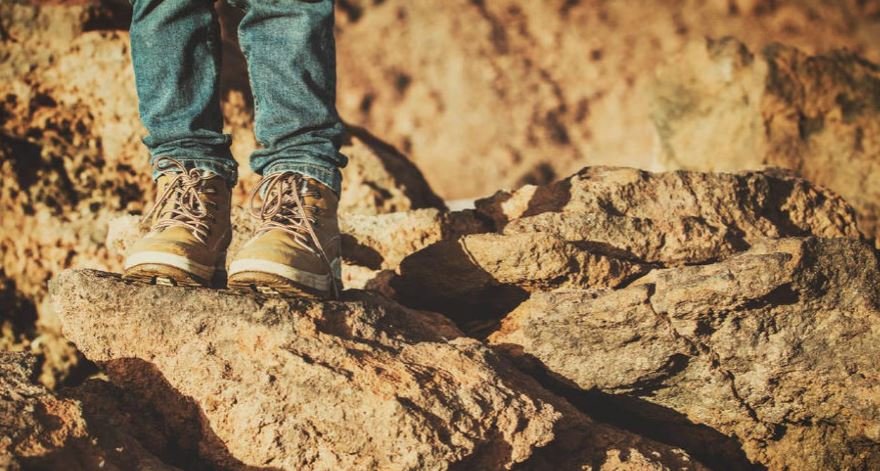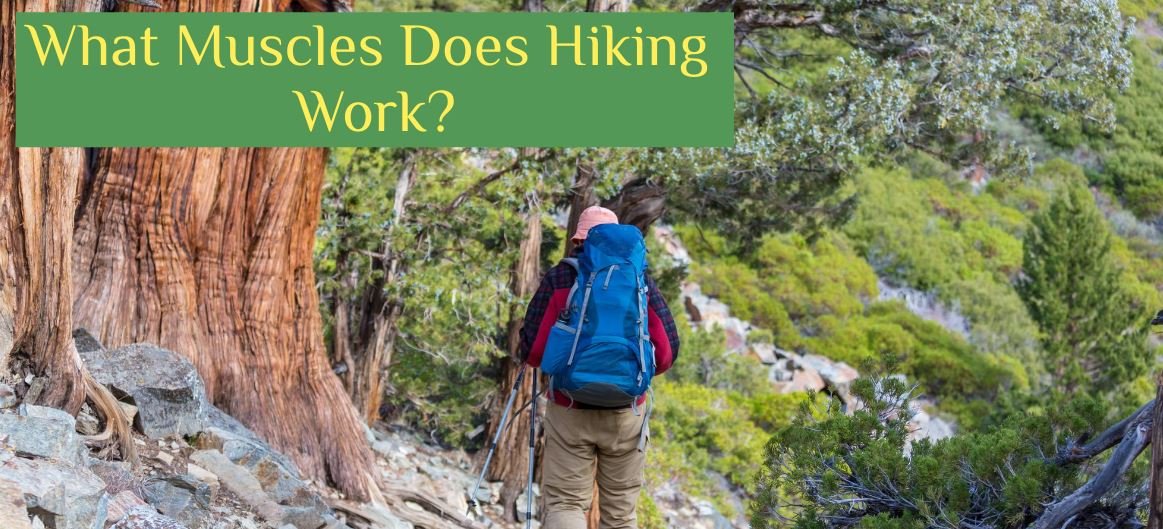There are many benefits to hiking, including improved cardiovascular health, increased strength and endurance, and better mental health. But what muscles does hiking work?
The answer may surprise you. Hiking works virtually every muscle in your body. Your lower body muscles, such as your quadriceps, hamstrings, and glutes, are used to propel you up and down the trail.
In this guide, I’ll give you a detailed answer to the question “What Muscles Does Hiking Work”.
Let’s dive in.
How Hiking Works Different Muscles in Your Body?

Hiking is a great way to get in shape and enjoy the outdoors. While hiking, you use different muscles in your body. This can be a good thing because it means that hiking can help keep you fit and healthy. When you hike, you use muscles in your legs, buttocks, abdomen, back, and arms. Hiking also helps strengthen your heart and lungs.
Hiking Works the Quadriceps, Hamstrings, and Calves
When most people think of exercise, they think of activities that work the upper body – like push-ups, weightlifting, and pull-ups. But what about exercises that work the lower body? Legs hiking is one such exercise. Hiking works the quadriceps, hamstrings, and calves.
The quadriceps are used to extend the leg, as when you walk or run. The hamstrings are used to bend the leg, as when you sit down or climb stairs. The calves are at the back of your leg, and are used to point the toes and lift the heel off of the ground, as when you walk or run.
Hiking is a great way to strengthen these muscles.
Core: Hiking Works the Abdominal and Back Muscles
Core hiking is an excellent way to work your abdominal and back muscles. It is a low-impact workout that engages your core muscles and can be done almost anywhere.
Core hiking involves using your own body weight as resistance to create a challenging workout.
To do core hiking, you’ll need a sturdy walking or hiking stick for balance. Begin by standing with your feet hip-width apart, then slowly walk forward, bending your knees slightly as you go. Keep your abdominal muscles engaged and focus on using your glutes and back muscles to move forward.
When you reach the end of your stride, use your leg muscles to return to the starting position. Repeat this motion for several minutes, taking care not to overexert yourself. Core hiking is a great way to improve strength and stability while getting outdoors and enjoying nature.
Arms: Hiking Works the Biceps and Triceps
When most people go hiking, they think of the cardio benefits they’ll enjoy when they reach the top of the hill or mountain. However, few people realize that hiking also works the biceps and triceps muscles.
But, of course, the intensity your arms muscles feel while hiking isn’t the same as the intensity you feel while weightlifting.
Shoulders: Hiking Works the Deltoid Muscles
The shoulder is a ball-and-socket joint that allows for a great range of motion. The deltoid muscle, which is located on the shoulder, is responsible for abduction (lifting the arm away from the body), flexion (bringing the arm closer to the body), and rotation (turning the arm). Hiking works these muscles as they are responsible for moving the arms in all directions.
Related: Is Hiking Bad for Your Knees?
What Muscles Does Hiking Work: FAQs
Can Hiking Tone Your Body?
There is no doubt that hiking is a great way to get outside and enjoy nature. But can it also help tone your body? The answer is yes! Hiking can help you burn calories, improve your cardiovascular health, and strengthen your muscles. In addition, hiking can also improve your balance and coordination. So if you’re looking for a way to get in shape, consider hiking!
Is Hiking a Good Way to Build Muscles?
Hiking is a great way to build muscles because it is a cardiovascular exercise that also works your leg muscles. When you hike, you are constantly using your muscles to propel yourself up hills and through forests, which helps to tone and strengthen them. In addition, hiking is a low-impact exercise, so it is gentle on your joints and ligaments.
Can You Get Ripped From Hiking?
So, can you really get ripped from hiking? The answer is yes, you can definitely get a great workout from hiking. Hiking is a total body workout that targets all the major muscle groups. It also helps improve cardiovascular health, burns calories, and strengthens bones.
Why Do Hikers Get Fat?
Hiking is a popular pastime, enjoyed by people of all ages and fitness levels. However, some hikers find themselves packing on the pounds, despite vigorous exercise. So why do hikers get fat? There are a few reasons: hiking burns fewer calories than people think, hikers often indulge in high-calorie snacks and drinks, and hilly terrain can lead to muscle fatigue. In addition, many hikers underestimate the difficulty of maintaining a healthy weight while hiking regularly.
Conclusion: What Muscles Does Hiking Work
.In conclusion, hiking is a great way to get your muscles moving and to stay in shape. It works a variety of muscles, and it is a low-impact exercise that is gentle on the body. So, if you are looking for a new way to work out your muscles, hiking is definitely a good option.

